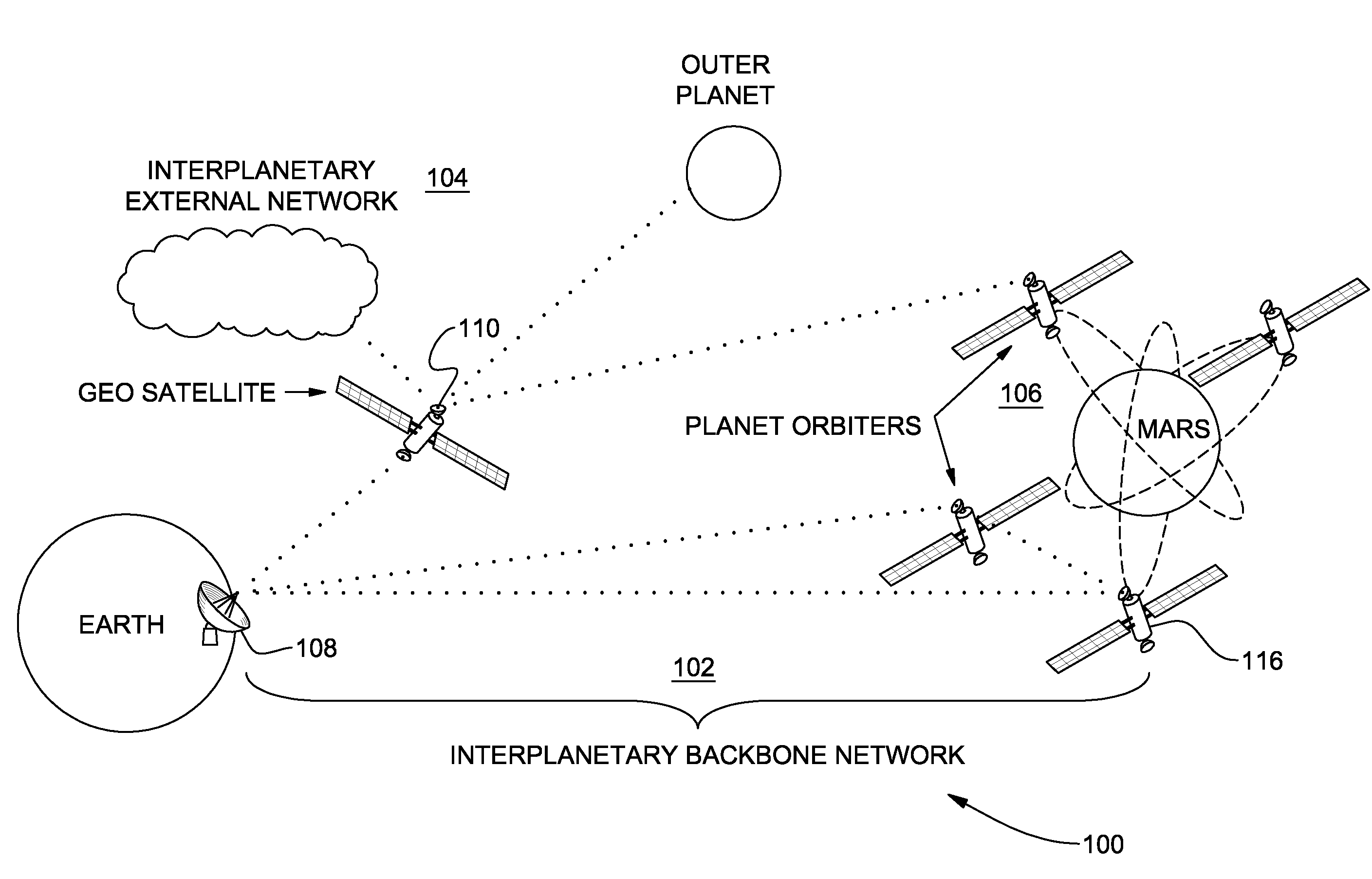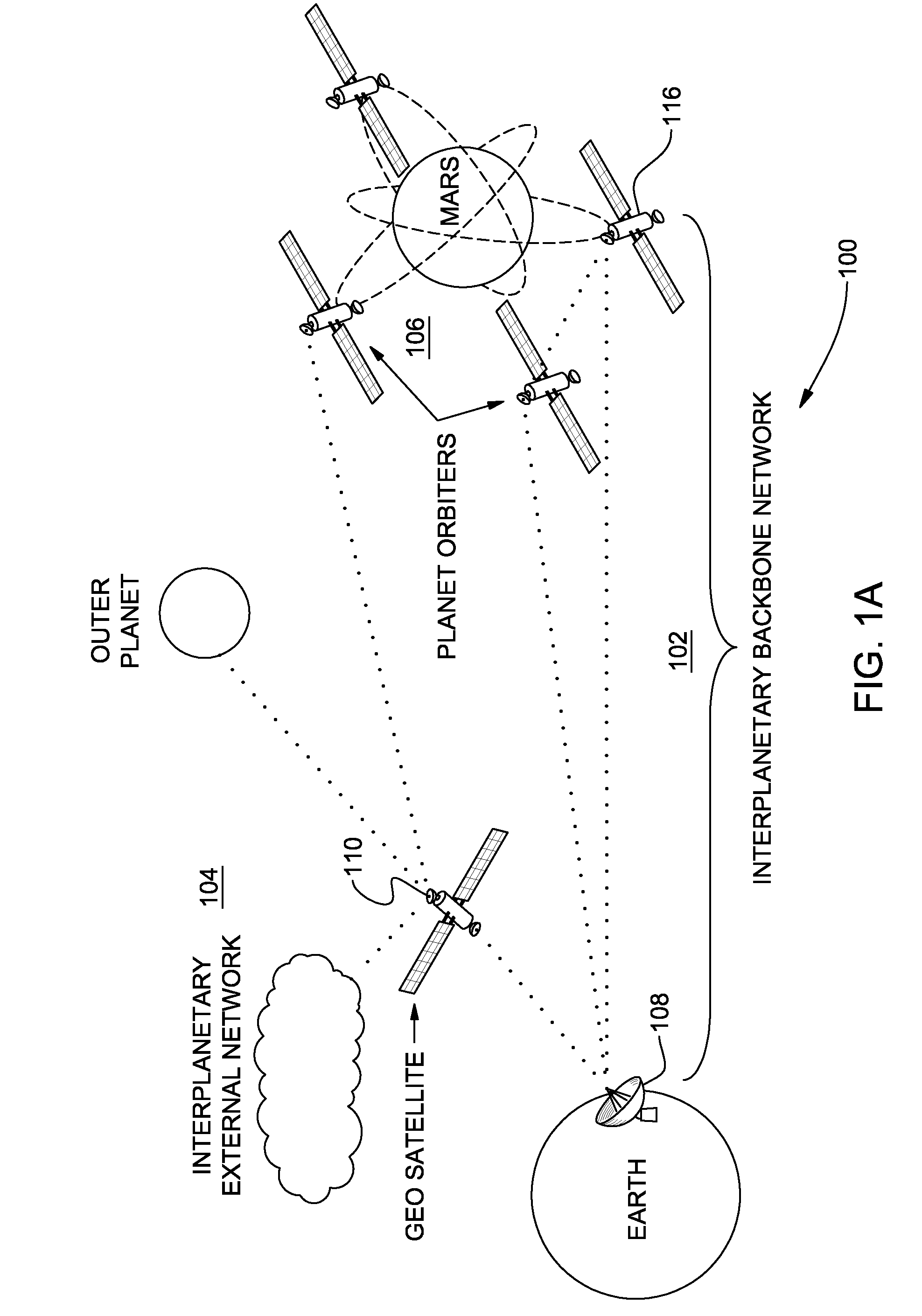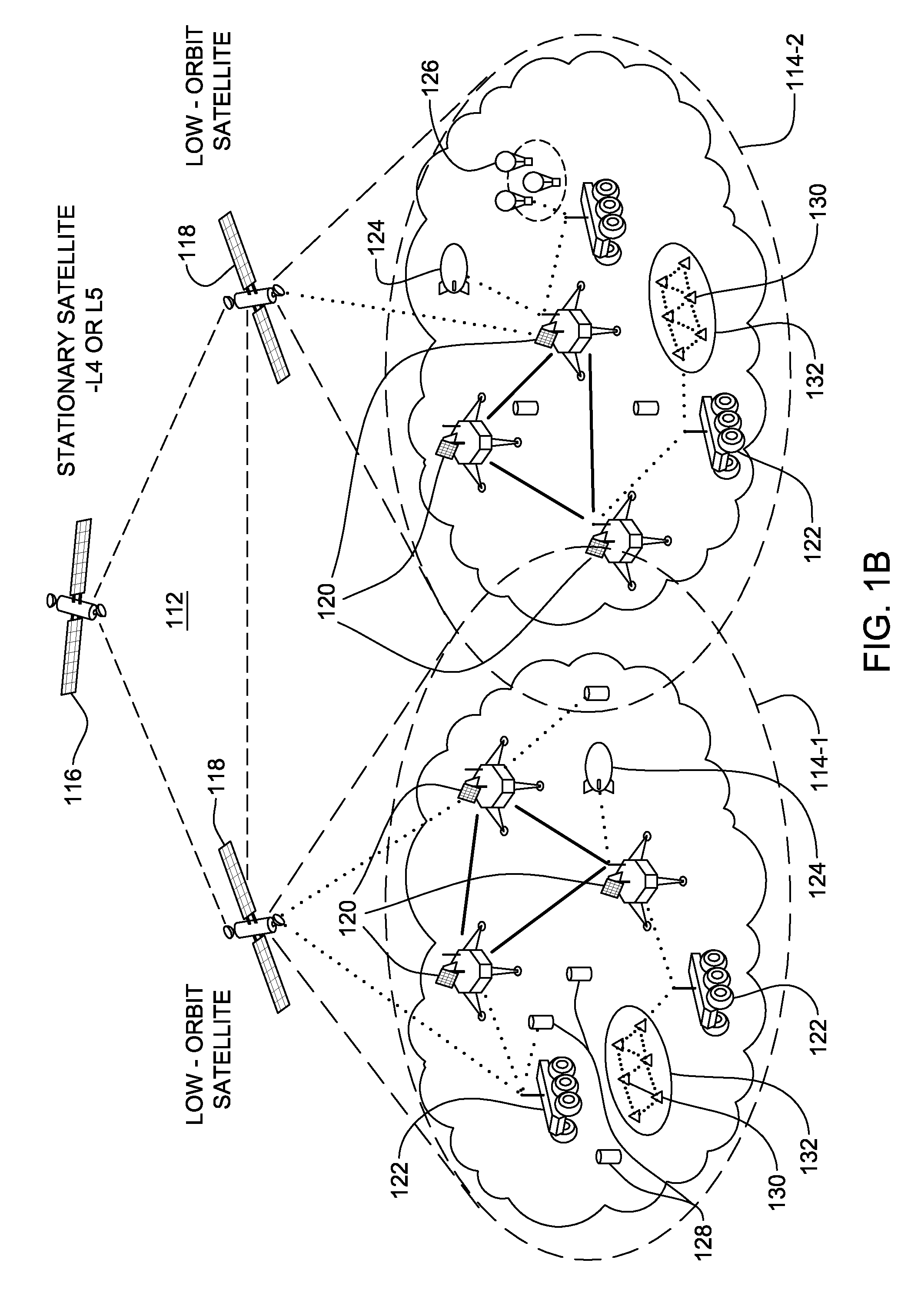Interplanetary communications network, interplanetary communications network backbone and method of managing interplanetary communications network
a communications network and interplanetary communication technology, applied in data switching networks, frequency-division multiplexes, instruments, etc., can solve the problems of inability to meet internet-based routing nor terrestrial mobile ad hoc routing protocols, and inability to realize interplanetary communications network infrastructure, etc., to achieve the effect of reducing network communications and routing oscillations, reducing link costs, and improving network stability
- Summary
- Abstract
- Description
- Claims
- Application Information
AI Technical Summary
Benefits of technology
Problems solved by technology
Method used
Image
Examples
Embodiment Construction
[0025]Turning now to the drawings, FIGS. 1A-B illustrate an example of a hierarchical interplanetary communications network 100 or Interplanetary Internet, trained off-line for static routing and network planning according to an advantageous embodiment of the disclosure. In particular, a preferred hierarchical interplanetary communications network 100 is a self-monitoring ad-hoc network of Artificial Neural Network (ANN) nodes. Each ANN may be in the hardware or software in each node. There are several different types of ANN nodes that may be suitable for different types of applications within the network 100. These types include feed-forward ANN nodes that learn with a teacher, recurrent ANN nodes that learn with or without a teacher and self organizing ANN nodes that learn without a teacher. Most frequently, ANNs are implemented in feed-forward nodes that are based on what is normally referred to as a Back Propagation (BP) Algorithm. In general, however, an ANN is relatively robus...
PUM
 Login to View More
Login to View More Abstract
Description
Claims
Application Information
 Login to View More
Login to View More - R&D
- Intellectual Property
- Life Sciences
- Materials
- Tech Scout
- Unparalleled Data Quality
- Higher Quality Content
- 60% Fewer Hallucinations
Browse by: Latest US Patents, China's latest patents, Technical Efficacy Thesaurus, Application Domain, Technology Topic, Popular Technical Reports.
© 2025 PatSnap. All rights reserved.Legal|Privacy policy|Modern Slavery Act Transparency Statement|Sitemap|About US| Contact US: help@patsnap.com



